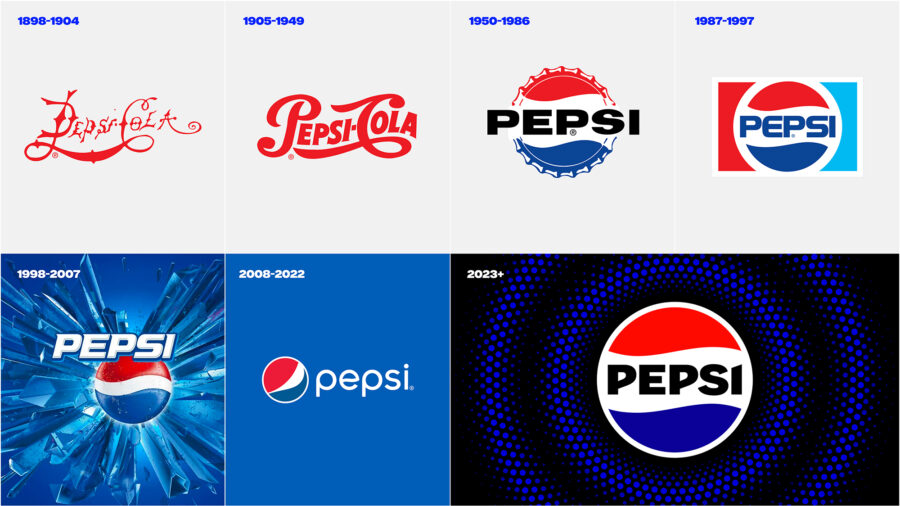(CNN) — What would you draw if asked to recreate the Pepsi logo from memory? Perhaps a circle with the brand’s signature red, white, and blue stripes. Probably the word “Pepsi” in that globe.
The majority of people who are guided through this exercise by PepsiCo, as it occasionally does, enter the word “Pepsi” in the circle. Yet, the present logo does not appear that way. Next to the famous globe, the brand name appears out to the side and somewhat meek. Hence, Pepsi is altering.
PepsiCo’s chief design officer, Mauro Porcini, told CNN that “we couldn’t ignore that type of thinking.” “We chose to accept it rather than reject it.”
Pepsi introduced a new logo and branding on Tuesday that will go into effect in North America this fall and throughout the world in 2019. It resembles the 1990s form that seems to have stuck in people’s minds, but with fresh additions to make it more contemporary, such as a new border and a different typeface and font colour. The modifications aim to highlight Pepsi’s low sugar line, a crucial component of the company’s growth strategy, as well as better match people’s memories.
“Bold and assured”
Pepsi has been operating for 125 years and occasionally changes its branding. In 2008, the current visual identity was unveiled. Yet since it originally arrived, it has grown a little stale.
In the design, the word “Pepsi” is “decoupled from the globe,” according to Todd Kaplan, chief marketing officer of Pepsi. It has a lowercase, italicised typeface, and the blue coloration is somewhat subdued. It lacks the assurance and vigour that the brand actually exudes.
Pepsi is “a big and assertive brand” that speaks for “unapologetic delight,” according to Kaplan. The present symbol, with the lowercase “pepsi” gently stepping back from that relaxed globe? Not very bold, not very confident.
It looks more like the new logo, with the bold, uppercase “PEPSI” in the centre of the circle and the white line wavy between the red and blue waves.
Tim Calkins, a marketing professor at Northwestern University’s Kellogg School of Management, remarked that it’s common for businesses to change their appearance in order to remain relevant. Yet, they must be cautious not to offend or confuse clients by making too many modifications. He gave the controversy over the Tropicana logo as an illustration. Customers were incensed in 2009 when Tropicana radically altered the look of its container. Within a few months, Tropicana, which was then a brand of PepsiCo, updated its logo once more.
You may always go backwards for “companies that have a long history,” according to Calkins. It can be “extremely strong” to tap nostalgic images. Yet, he added, businesses must take care to ensure that the legacy identity feels current.
According to Pepsi, the adjustments it is making are distinctive enough to succeed and showcase contemporary features like Pepsi’s zero-sugar line.
The hero is Zero.
As customer interest in full-sugar soda wanes, soft drink companies—including PepsiCo—have been concentrating on zero-sugar products and branding.
According to Ramon Laguarta, CEO of PepsiCo, “Zero is going to be the focus of the strategy for the Pepsi brand” in the US. Pepsi changed the recipe for their sugar-free beverage earlier this year and released a Super Bowl commercial to promote it.
“We predict that the non-sugar cola market will continue to expand quickly in this nation. Laguarta said that zero has already been a “strategic” product in Europe and other places. “We’re seeing customers pivoting,” she added.
In order to do this, Porcini told CNN that “zero sugar is going to be the protagonist of our communication approach.”
The new logo employs a black text and border to draw attention to the zero line, paying homage to Pepsi Zero’s black can and label.
The border also contributes to the logo’s position as the clear focal point of the business’s recent pulse campaign, which includes lines radiating out from the logo in sync with energetic music in video advertising and other places.
The team approached the update with caution because they are aware that even minor modifications might cause a stir among customers.
For the past few years, this process has been iterative, according to Kaplan. We believe it’s a really fantastic way to preserve [Pepsi’s] familiarity while still looking ahead.
Image/content Source: Pepsi has a new logo
In publishing and graphic design, Lorem ipsum is a placeholder text commonly used to demonstrate the visual form of a document or a typeface without relying on meaningful content.
